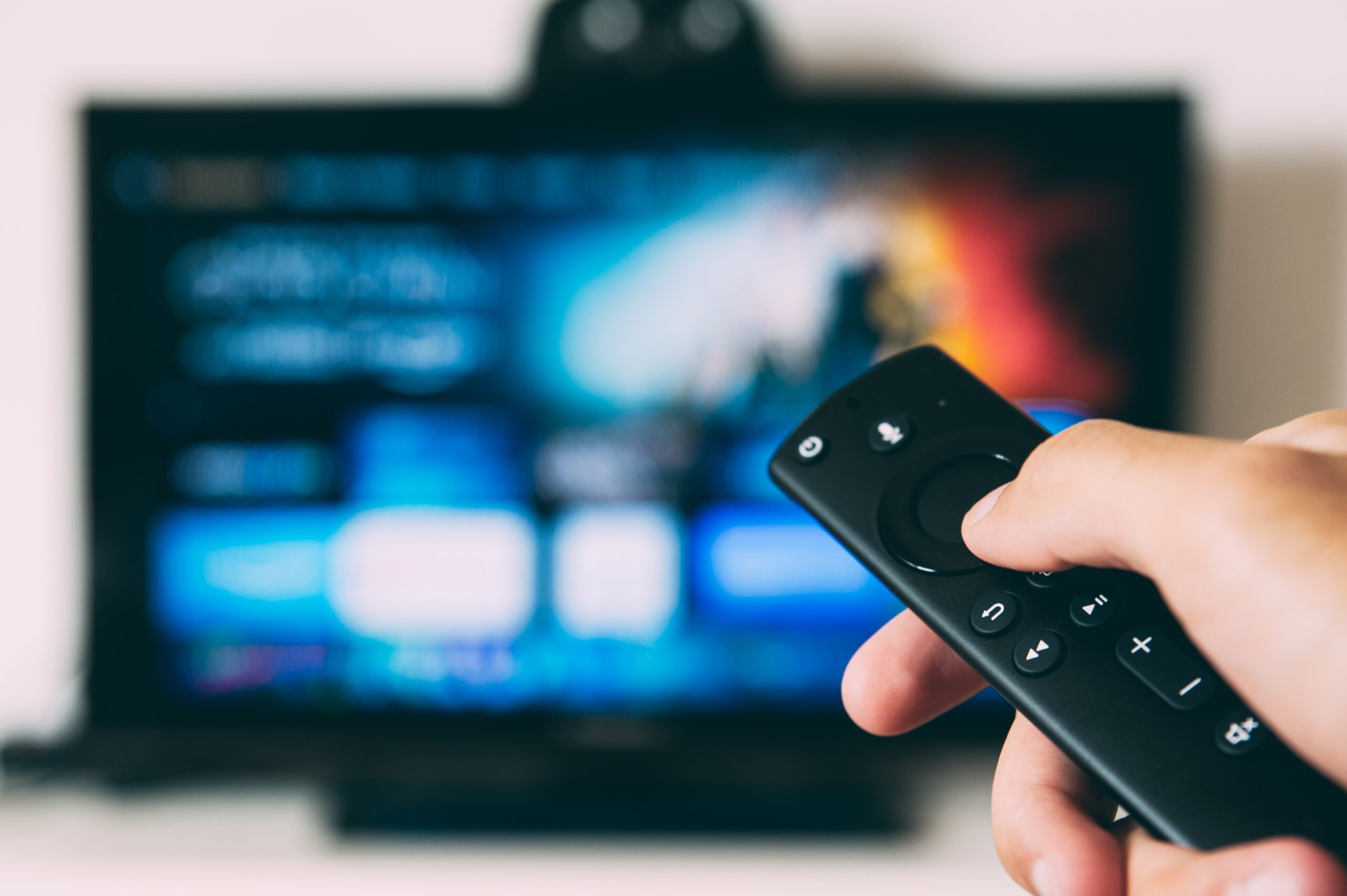When you decide to invest in a big-screen TV, you want something that looks good and provides the best picture quality. There are many options out there and it can be difficult to choose, but with this guide we’re here to help you find the perfect choice for your viewing needs. Here are our top 10 picks of the best big-screen TVs available.
10 best big-screen TVs
1. LG OLED65CXPUA 4K Smart UHD TV – This 65-inch OLED smart TV is one of LG’s most popular models and for good reason. The stunning picture quality combined with deep blacks make this model stand out from the pack. It also has all the latest streaming services built-in, so you won’t have to worry about connecting any additional devices.
2. Samsung QN65Q60RAFXZA – This 65-inch smart TV from Samsung is a great choice for those who want an excellent picture quality at a reasonable price. It’s a 4K UHD model with support for HDR content and motion smoothing technology, so you’ll get plenty of detail and clarity in your viewing experience.
3. Sony XBR85X850G – The 85-inch screen on this model from Sony is sure to make an impression in any room it’s placed in. It has 4K resolution and supports HDR10, so you can be confident that the picture quality will be excellent no matter what you’re watching.
4. Vizio M512-G1 – This 50-inch model from Vizio is a great choice for those on a budget. It offers full-array LED backlighting and support for HDR content, so you can be sure to get great picture quality without breaking the bank.
5. Hisense H8F Series – The H8F series from Hisense is another great option if you’re looking for an affordable big-screen TV. It has 4K Ultra HD resolution and support for both Dolby Vision and HDR10, so you won’t have to compromise on picture quality even with its low price tag.
6. Samsung QN82Q7FN – If you’re looking for something with more size, the 82-inch model from Samsung is a great choice. It offers 4K resolution and support for HDR content, as well as its unique One Connect box that allows you to connect all your devices in one place.
7. Sony XBR85X900F – This 85-inch model from Sony is another excellent high-end option that’s sure to impress. It has 4K Ultra HD resolution and supports both Dolby Vision and HDR10, so you’ll get stunning picture quality no matter what you’re watching.
8. TCL 75R617 – This 75-inch model from TCL is a great choice if you want an even bigger screen without breaking the bank. It comes with full-array LED backlighting and support for both Dolby Vision and HDR10, so you can be sure to get a great viewing experience.
9. LG OLED75CXPUA – This 75-inch model from LG is one of the largest OLED TVs available and it’s sure to make an impression in any room. It has stunning picture quality with deep blacks and also comes with all the latest streaming services built-in, so you won’t have to worry about connecting any additional devices.
10. Samsung QN85Q90TAFXZA – If size is what you’re looking for then the 85-inch model from Samsung is our top pick. It has 4K resolution with support for HDR content as well as a unique One Connect box, so you can connect all your devices without any additional wires.
What is a big-screen TV?
A big-screen TV is a television with a screen size of at least 37 inches, measured diagonally. It typically has more features than a standard-size TV and can support home theater systems. Big-screen TVs are often referred to as HDTVs (high definition televisions) because they display images in higher resolution than standard TVs; some models also offer 3D viewing capabilities.
With its large screen and high quality picture, a big-screen TV is the perfect choice for movie buffs or gamers who want an immersive entertainment experience. However, it’s important to note that buying one of these sets may require extra considerations such as the size of the room, where the set will be located, and what type of mount or stands the TV requires.
Additionally, due to their larger size, big-screen TVs tend to be more expensive than standard models and may also require additional audio equipment to maximize the viewing experience. But for those who truly want a cinematic experience in their own home, a big-screen TV is definitely worth it.
When making a decision about buying a big-screen TV, consumers should consider their budget and the size of the room where it will be placed. Bigger screens are generally more expensive than regular TVs but can provide an excellent picture quality that’s perfect for watching movies and playing games on.
Additionally, some features like 3D viewing capability may cost extra, so make sure you know what your needs are before settling on a model. It’s also important to think about the type of mounting or stands you’ll need for your big-screen TV, and be sure to measure the area where it will be placed in order to ensure that it can fit comfortably in that space. Finally, if you’re looking for surround sound capability, you may want to invest in additional audio equipment such as speakers and amplifiers.
Overall, while buying a big-screen TV is an investment, it can provide an immersive entertainment experience that regular size TVs cannot match. With careful consideration of budget and room size, consumers can find a model that fits their needs and provides years of enjoyment.
By investing in a big-screen TV with the right features, consumers can experience a home theater quality viewing experience right in their living room. Modern big-screen TVs often come with features such as HDTV capability and 3D viewing, giving viewers an immersive entertainment experience that standard televisions just don’t offer.
Additionally, with the right audio equipment, movie buffs and gamers alike can enjoy surround sound capabilities for a fully cinematic and realistic experience. When it comes to investing in a big-screen TV for your home, it’s important to consider budget and size requirements before making a purchase decision. Doing so will ensure that you get the most out of your investment while still fitting comfortably into your space.
What type of television has the best picture?
When it comes to choosing a television with the best picture, consumers need to consider a few key factors. LCD (liquid crystal display) and OLED (organic light-emitting diode) are among the most popular types of displays on the market today. Both offer excellent image quality but in slightly different ways.
LCD displays use backlighting that illuminates the pixels or color filters, allowing them to produce vibrant colors and good contrast. They typically have very wide viewing angles, meaning they look good even when viewed from an off-angle.
For this reason, they tend to be seen as more reliable over time since they won’t suffer from burn-in like some plasma TVs can. However, LCDs don’t have the deepest black levels, so they can’t produce quite as much detail in dark scenes as OLEDs.
OLED displays use self-lighting pixels that are capable of producing perfect blacks and intense color saturation. This makes them ideal for detailed images with rich contrast, especially in darker scenes. They also typically feature incredibly wide viewing angles and very quick response times, making them a great choice for gamers or those who watch a lot of sports programming. The downside is that OLEDs tend to be more expensive than LCDs and may not last as long due to possible burn-in issues.
Overall, both LCD and OLED TVs offer excellent picture quality but it really comes down to what type of viewing experience you prefer and your budget. While LCDs may be a better overall choice for those who need reliability and affordability, OLEDs are the way to go if you’re looking for the most detailed, vibrant picture possible.
No matter your priorities or budget, there’s a TV out there that can meet your needs when it comes to picture quality. Take some time to compare the different types of displays available on the market today and choose one that best suits your viewing style. With a little research, you can find the perfect television with the best image quality for your home.
Is OLED better than QLED?
When it comes to deciding which technology is best for your home television, OLED and QLED are two of the top contenders. Both offer a superior picture quality compared to traditional LCD displays but they have different features that might sway you one way or the other. Below we’ll explore some key differences so you can make an informed decision when picking out a new TV.
When it comes to brightness levels, QLED TVs will blow OLED TVs away with up to four times more brightness. This gives them a clear advantage in rooms that get a lot of natural light or if you prefer brighter, more vibrant colors on screen. However, because OLEDs use organic light-emitting diodes (OLEDs) instead of liquid crystals like QLEDs, they offer better viewing angles than QLED TVs. This will come in handy if you have a wide seating arrangement or often watch TV from an angle.
QLEDs also use quantum dots to achieve their superior picture quality. These nanocrystals are placed between the backlight and LCD panel and emit more vibrant colors with deeper blacks. OLED displays don’t need a backlight because each pixel is individually lit, allowing them to produce perfect black levels and higher contrast ratios compared to QLEDs.
In terms of resolution, both technologies support 4K Ultra HD resolution, which should be adequate for most viewers unless you want 8K streaming capabilities for high-end gaming or watching sports broadcasts in 3D.
When it comes to price, OLED TVs tend to be more expensive than their QLED counterparts. This is because OLED displays use more expensive materials and require more complex manufacturing processes. However, prices for both technologies have come down in recent years and are now more accessible for everyday viewers.
Ultimately, when deciding which technology is right for you, it will come down to personal preference. If you want a brighter display with richer colors, then go with a QLED TV, but if you prefer deeper blacks and better viewing angles then an OLED TV might be the better option. Consider your room environment and budget when making the final decision so that you can get the best possible experience from your home television setup.
Which brand is best for smart TV?
When deciding which brand is best for a smart TV, there are several factors to consider. First and foremost, the size of the TV should be taken into account when making a purchase. Smart TVs come in a variety of sizes, ranging from 24-inch to 75-inch models. It’s important to get the right size for your viewing needs so that you can enjoy the full picture quality without having to strain your eyes or neck.
Another factor to consider is resolution; most brands offer Full HD as well as 4K Ultra HD options. The higher the resolution, the sharper and more detailed the image will be, so if you’re looking for an immersive experience with stunning visuals then it may be worth investing in a higher resolution model. Additionally, some smart TVs offer HDR (High Dynamic Range) capabilities which can further improve the picture quality by making it look more vivid and vibrant.
Furthermore, pay attention to the operating system as this will determine what type of apps you can use and how easily they can be accessed. Popular options include Android TV and WebOS; both offer excellent functionalities such as voice search, access to streaming services like Netflix and Amazon Prime, as well as personalized recommendation algorithms.
Other factors to consider are the sound quality of a TV’s built-in speakers (some brands offer Dolby Atmos for superior audio), design features such as slimness or bezel width plus connectivity ports which allow you to connect other devices via HDMI or USB.



